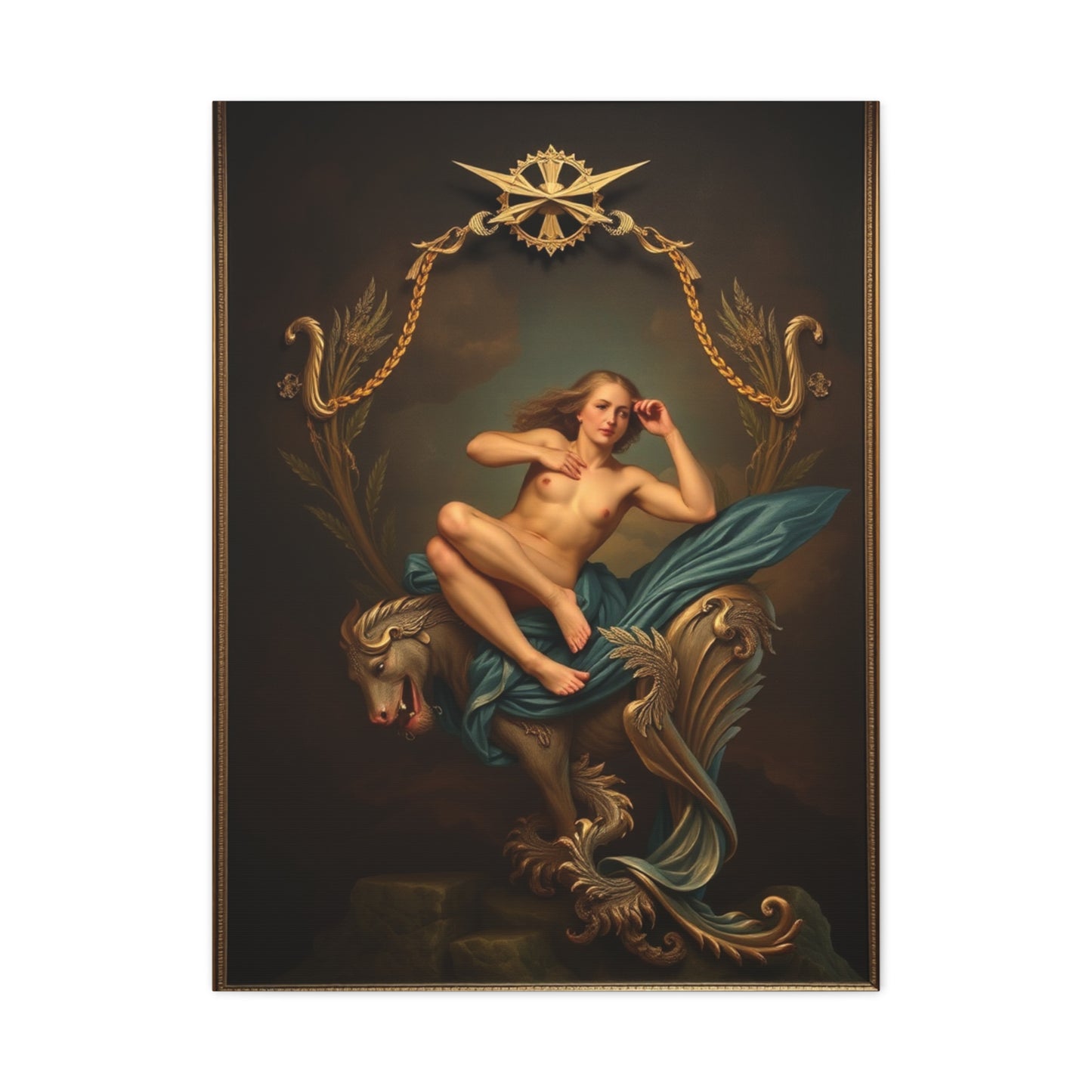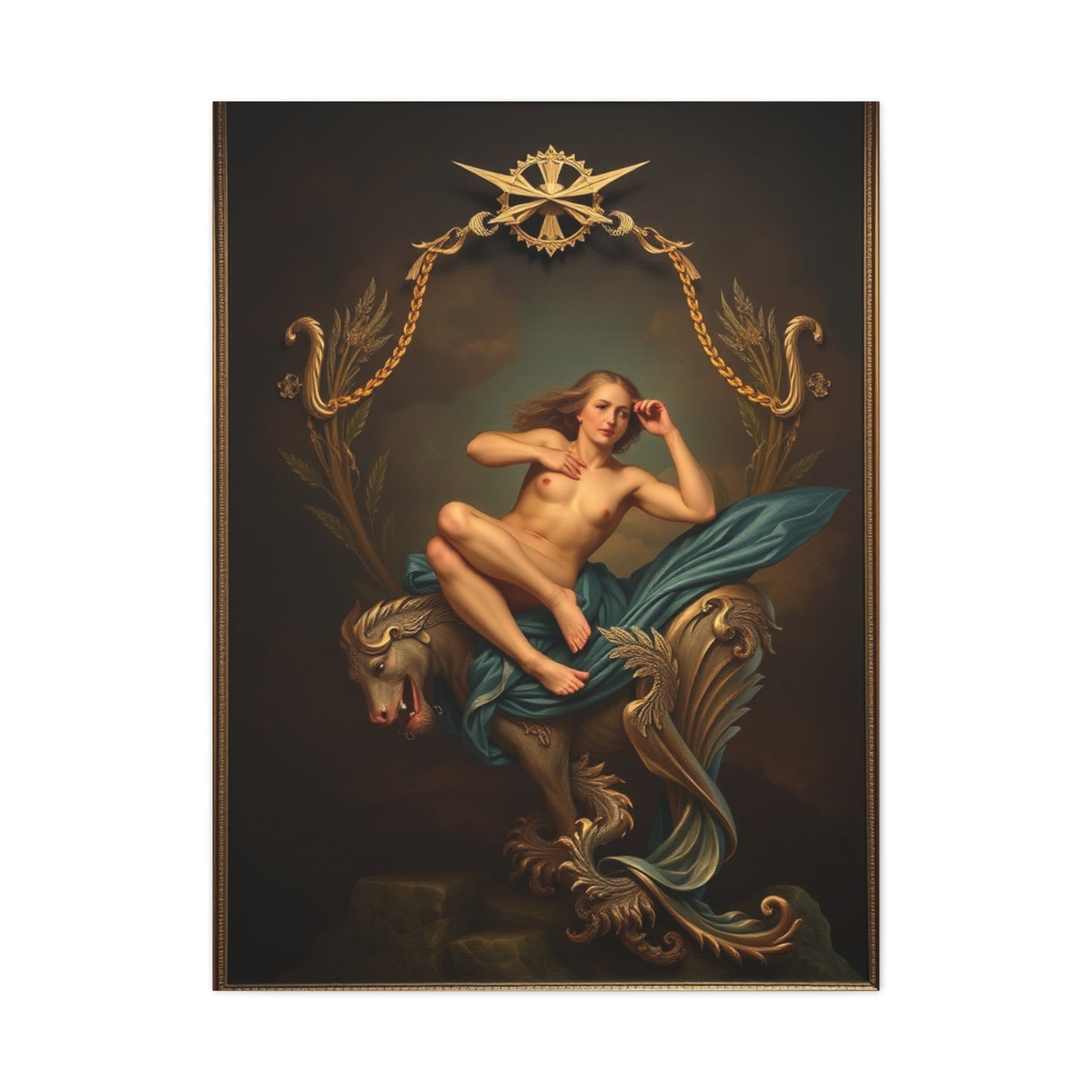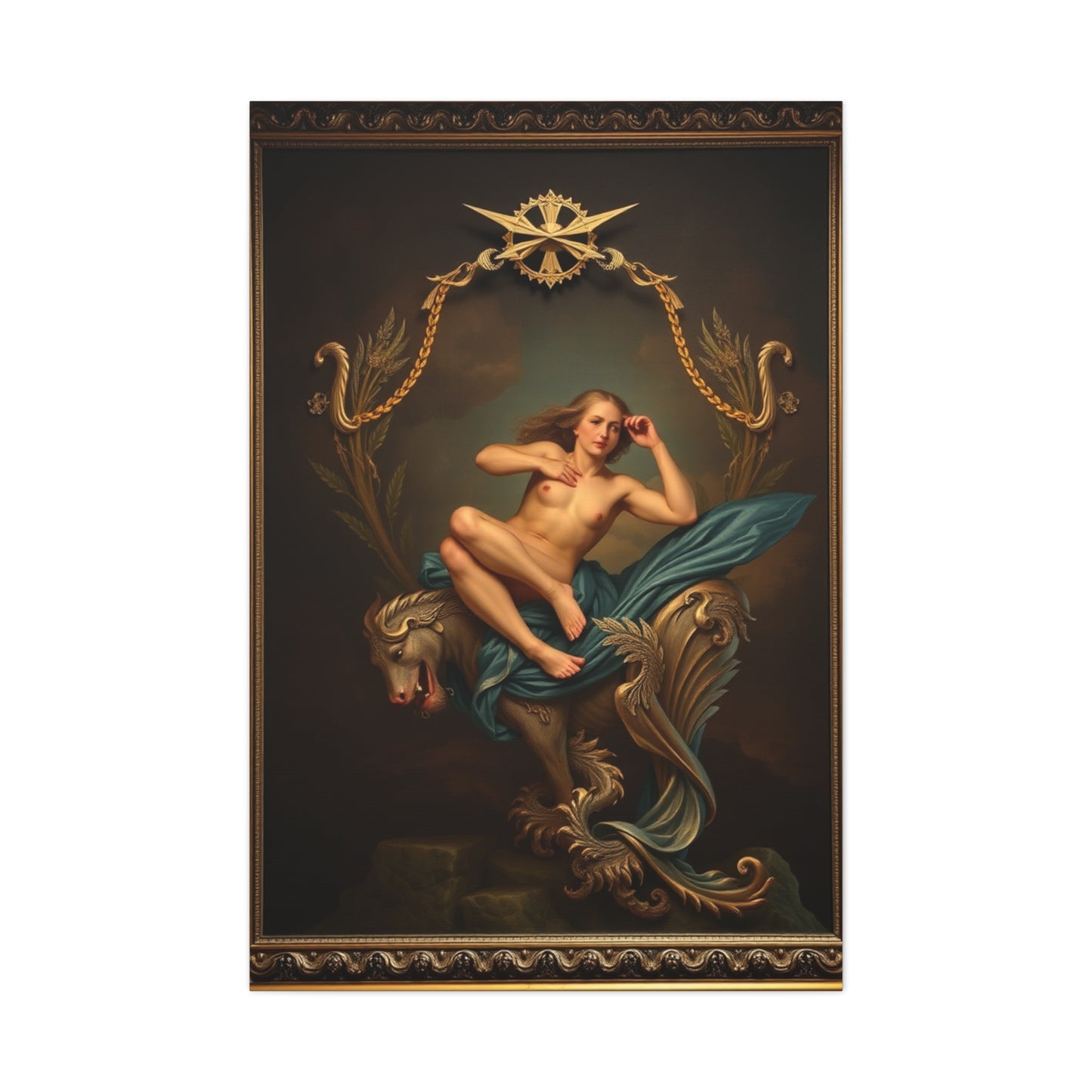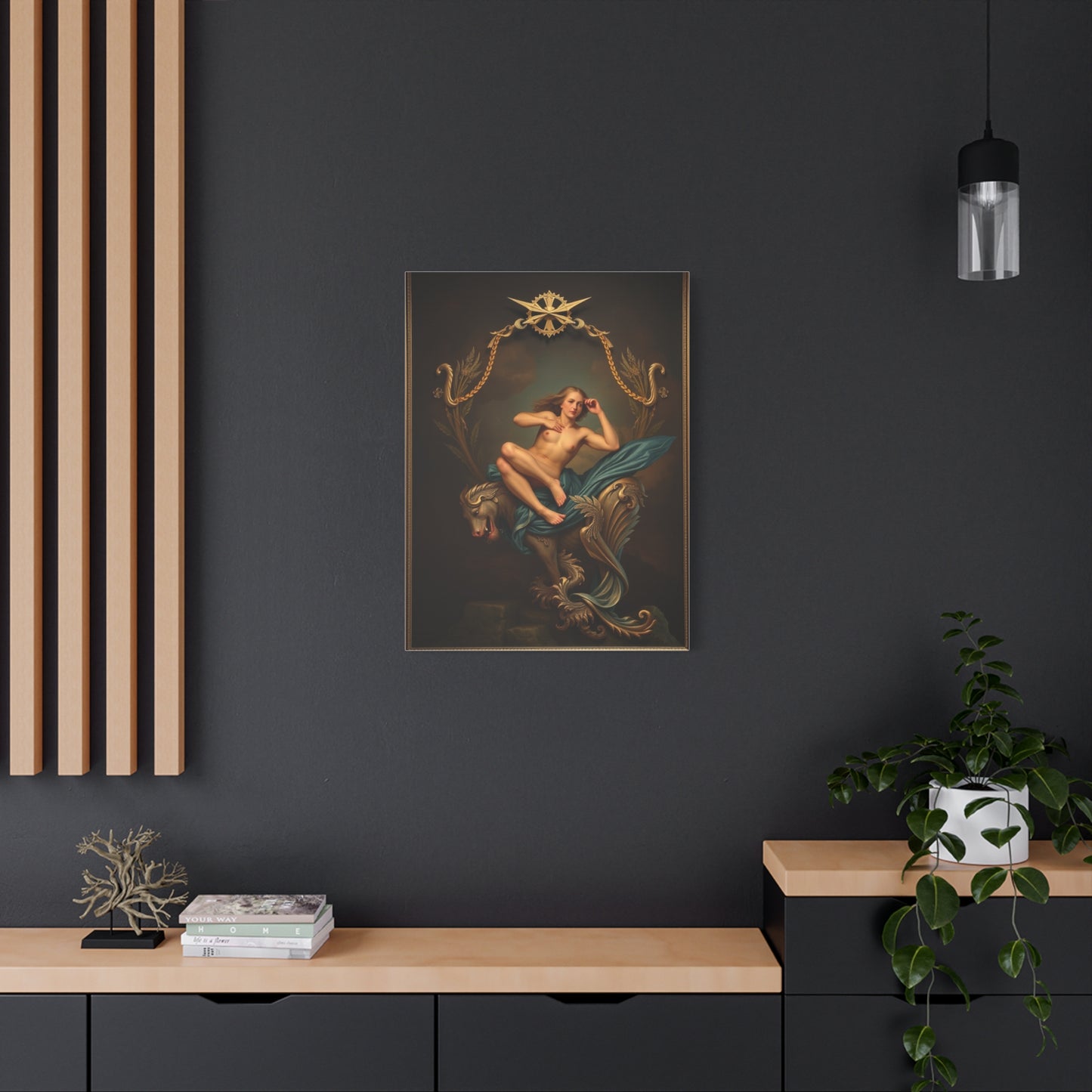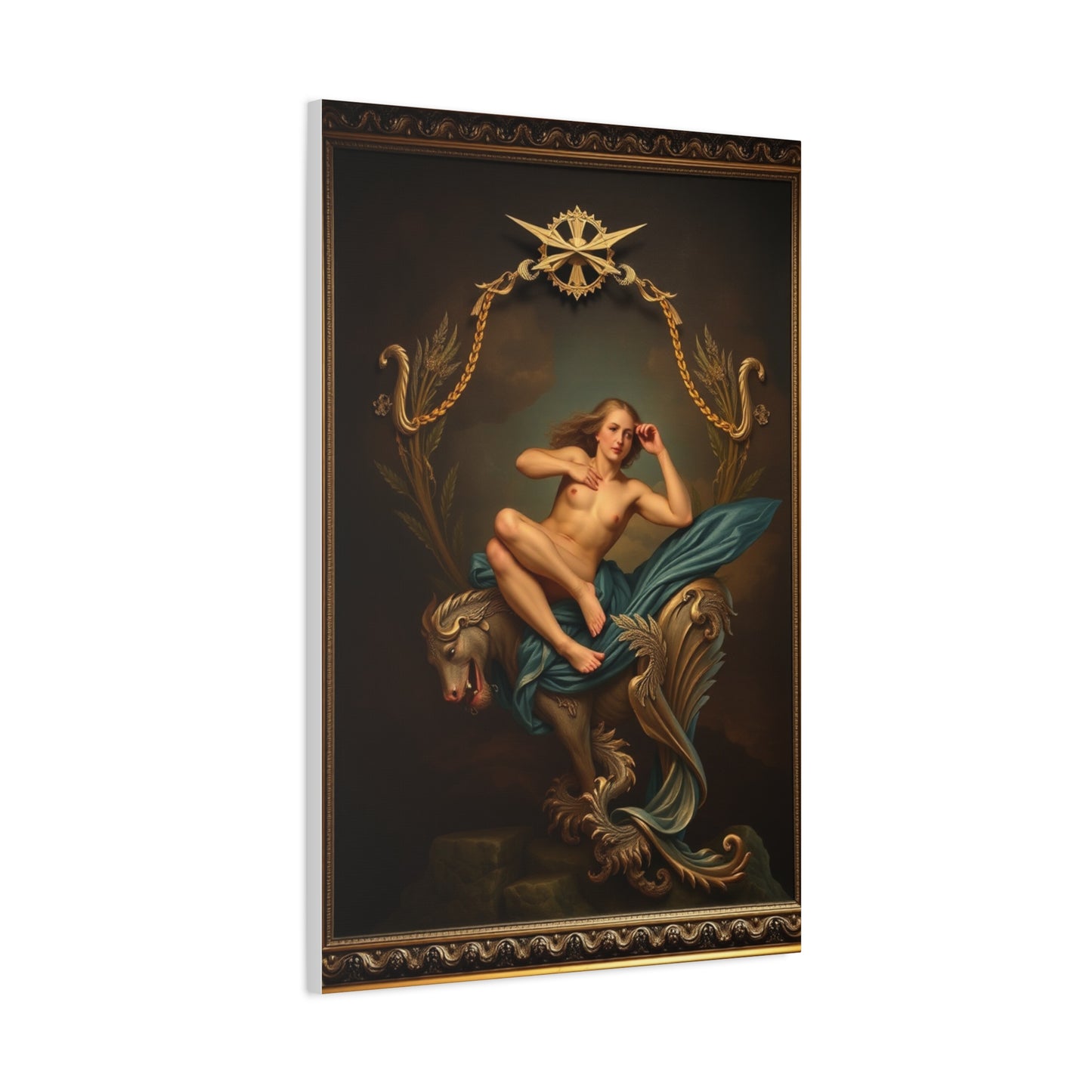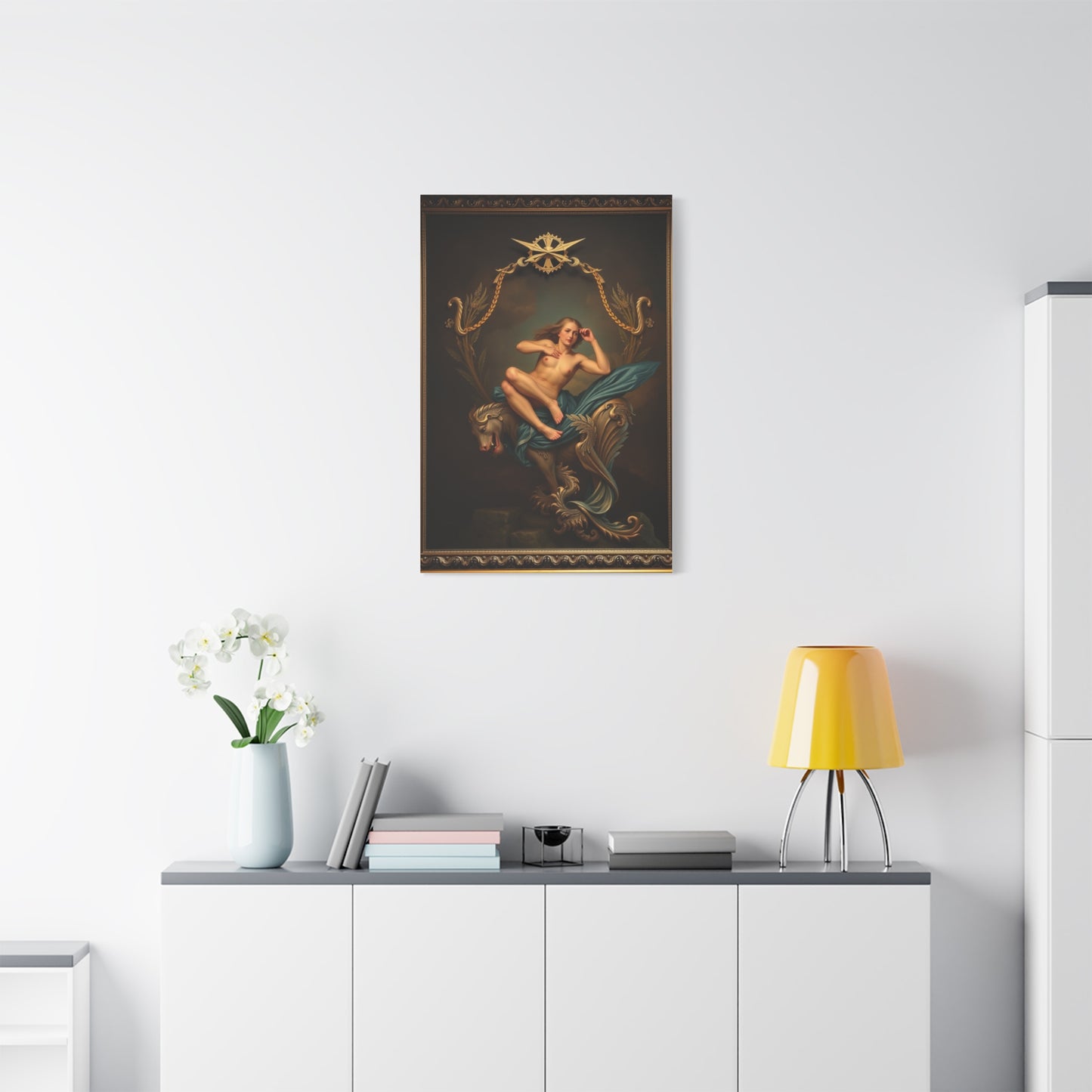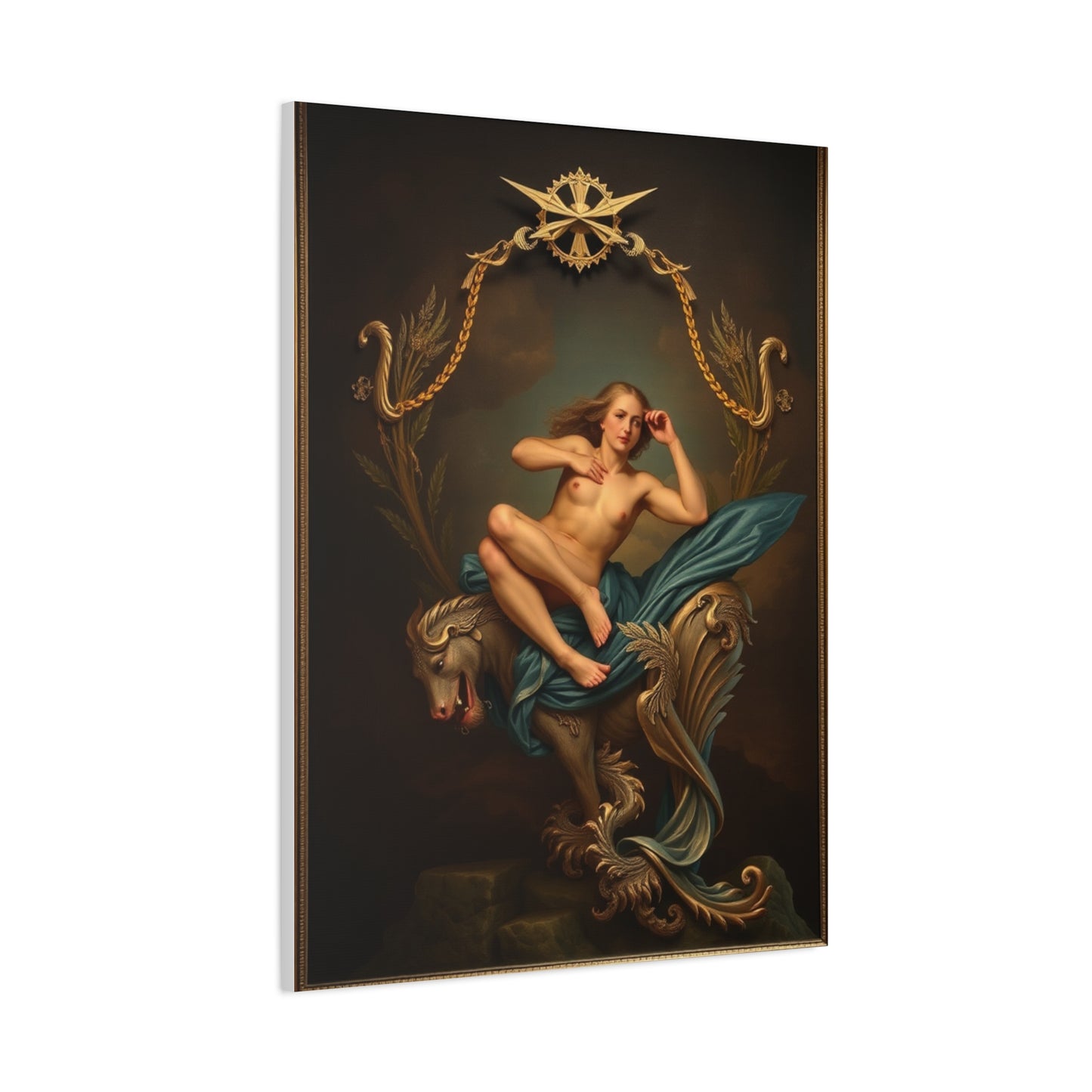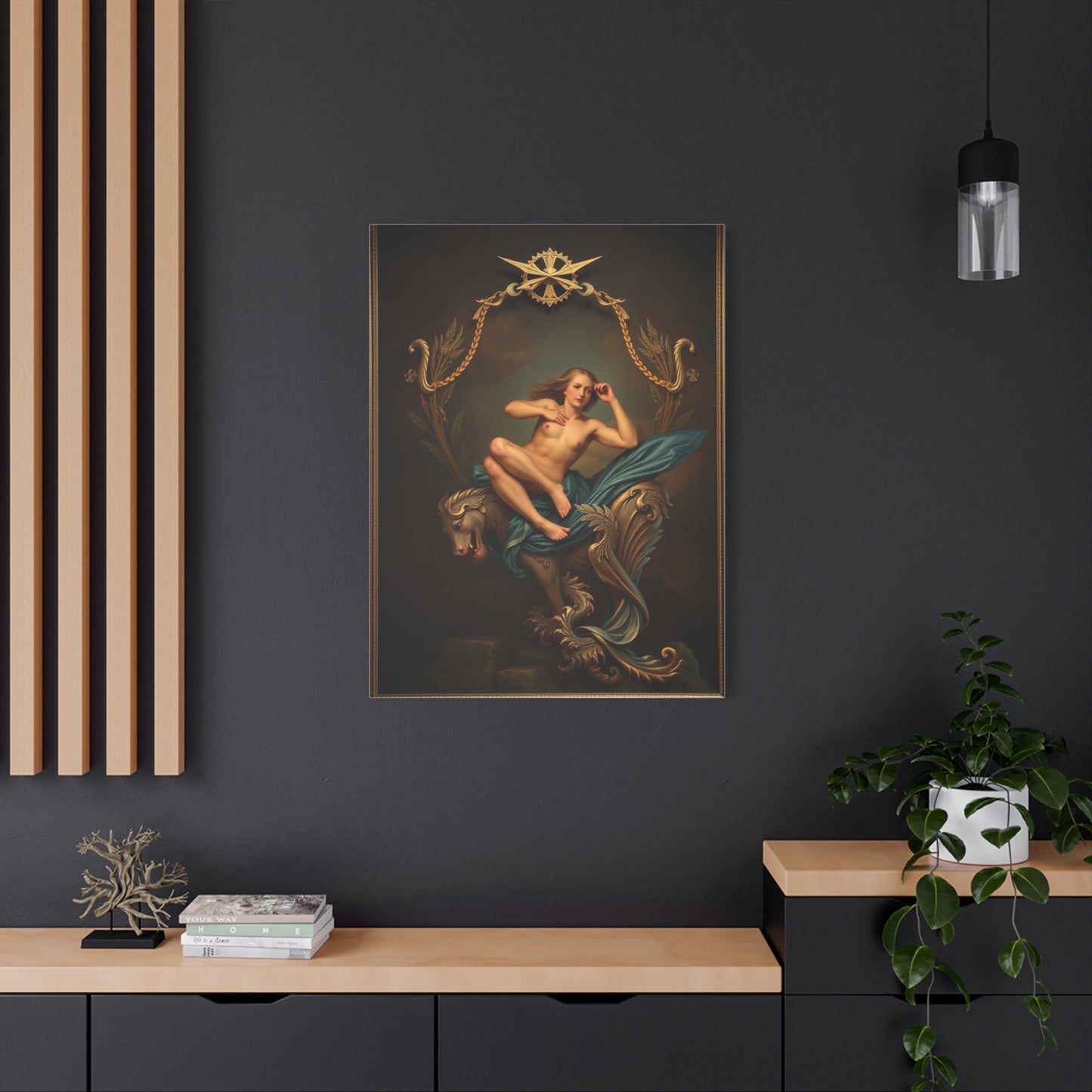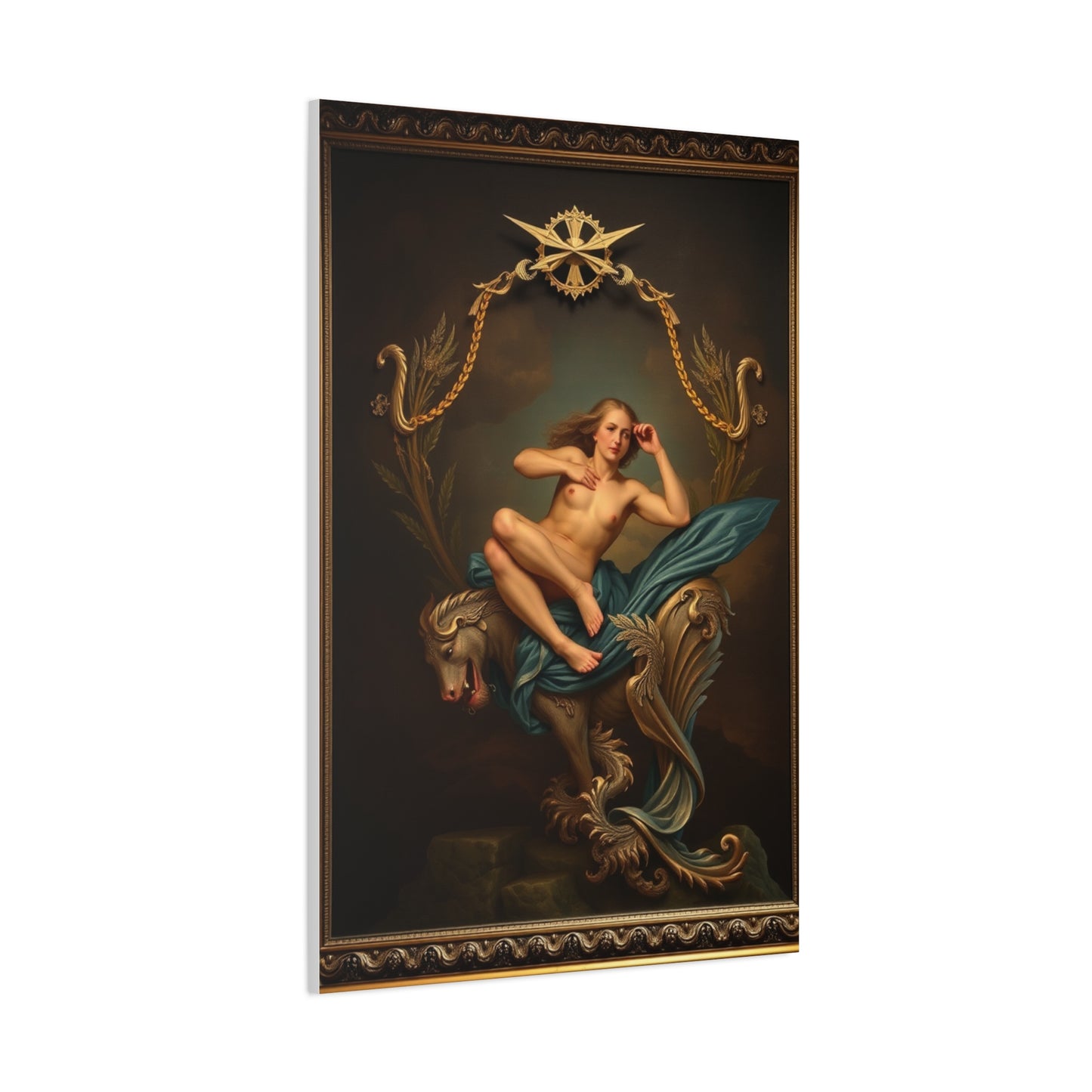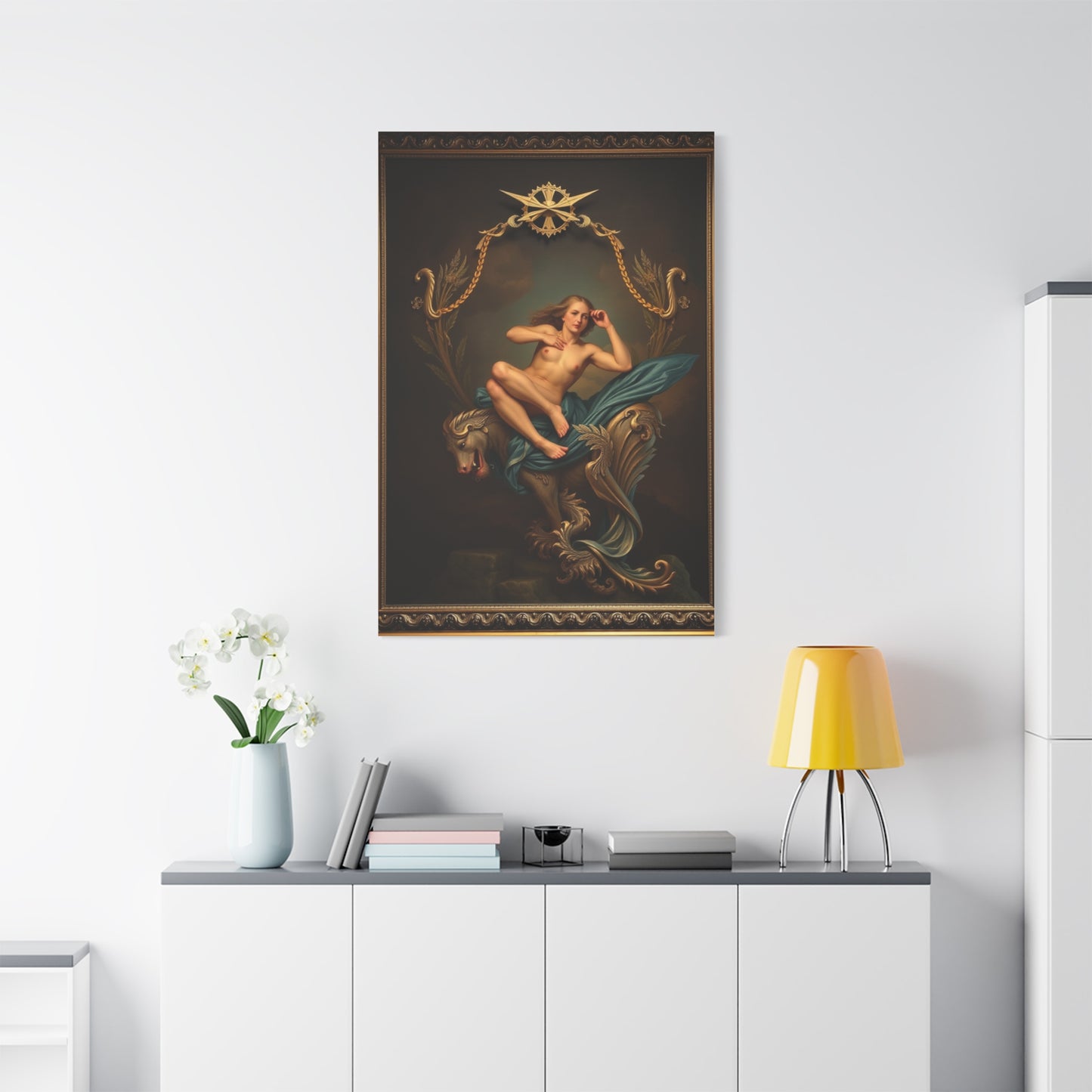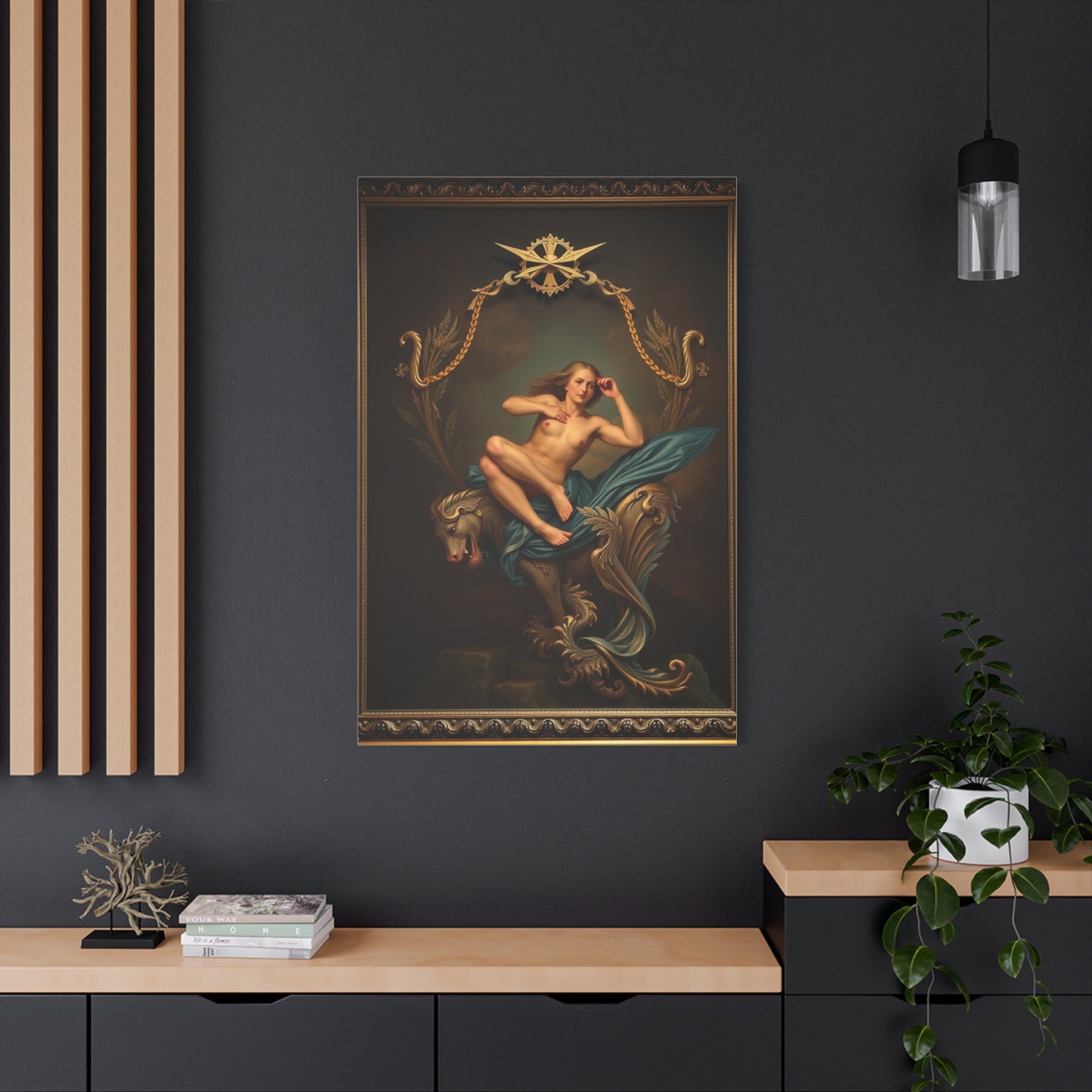Creating a Legacy: Aristocratic display Wall Art as a Reflection of Taste and Culture
The world of interior design continues to evolve, yet certain elements remain timeless in their appeal and sophistication. Among these enduring design choices, aristocratic wall art stands as a testament to refined taste and elevated aesthetics. This comprehensive exploration delves into the multifaceted world of noble-inspired canvas displays, examining how these pieces can revolutionize residential and commercial spaces while maintaining an air of distinguished elegance.
The allure of aristocratic-inspired wall art lies in its ability to bridge historical grandeur with contemporary sensibilities. These pieces carry the weight of centuries-old artistic traditions while speaking fluently to modern design preferences. Whether you're furnishing a minimalist apartment, a traditional home, or a cutting-edge office space, the right selection of canvas prints featuring aristocratic themes can establish an atmosphere of cultured sophistication that few other decorative elements can match.
Throughout this extensive guide, we'll navigate the diverse landscape of aristocratic aesthetic wall displays, exploring everything from subtle accent pieces to commanding focal points. We'll examine how these artistic elements function across various room types, architectural styles, and design philosophies, providing you with the knowledge needed to make informed decisions about incorporating these distinguished pieces into your environment.
Aristocratic Aesthetic Wall Art
The foundation of aristocratic aesthetic wall art rests upon centuries of artistic tradition, drawing inspiration from European nobility, classical portraiture, heraldic imagery, and the refined visual culture of historical upper classes. These pieces transcend mere decoration, serving as cultural touchstones that connect contemporary spaces with the artistic heritage of previous eras. The aesthetic encompasses a wide spectrum of visual elements, from regal portraiture and ornate patterns to subdued color palettes that evoke the atmosphere of grand estates and palatial halls.
When considering aristocratic aesthetic wall art for your space, understanding its historical context enriches appreciation and selection. The visual language of nobility developed over centuries, incorporating specific color schemes, compositional techniques, and symbolic elements that communicated status, power, and refined taste. Deep burgundies, forest greens, royal blues, and metallic accents frequently appear in these works, often combined with classical imagery such as crests, crowns, architectural elements from grand estates, and formal portraiture styles.
Modern interpretations of aristocratic aesthetic wall art have evolved to accommodate contemporary design sensibilities while preserving the core elements that define the style. Contemporary artists and designers have reimagined these traditional motifs, stripping away excessive ornamentation while retaining the essential character that makes these pieces so compelling. This evolution has made aristocratic-inspired art accessible to a broader audience, allowing those who appreciate refined aesthetics to incorporate these elements without committing to a fully traditional decorating scheme.
The psychological impact of aristocratic aesthetic wall art should not be underestimated. These pieces communicate sophistication, cultural awareness, and attention to quality, sending subtle but powerful messages about the space and its occupants. In residential settings, they create an atmosphere of permanence and refined taste, while in professional environments, they establish credibility and seriousness of purpose. The presence of these carefully chosen pieces suggests thoughtfulness and intentionality in design choices, qualities that resonate deeply with visitors and occupants alike.
Selecting aristocratic aesthetic wall art requires consideration of multiple factors beyond simple visual appeal. The scale of the piece relative to the wall and surrounding furniture, the color relationship between the artwork and existing palette, and the stylistic coherence with other design elements all contribute to successful integration. Additionally, considering the room's function and the mood you wish to establish helps narrow the selection to pieces that will truly enhance your space rather than simply filling wall area.
Elegant Canvas Prints for Sophisticated Spaces
Elegant canvas prints designed for sophisticated spaces represent a carefully curated category of wall art that prioritizes refinement, subtlety, and timeless appeal over trendy designs or bold statements. These prints serve as the foundation for creating environments that exude quiet confidence and cultured taste, spaces where every element has been thoughtfully considered and purposefully placed. The hallmark of truly elegant canvas prints lies in their ability to enhance a room without overwhelming it, to add interest without creating visual chaos, and to communicate sophistication through restraint rather than excess.
The selection process for elegant canvas prints demands a discerning eye and appreciation for nuance. Unlike more dramatic or avant-garde artwork that immediately commands attention, elegant prints often reveal their qualities gradually, rewarding sustained viewing with subtle details and carefully considered compositions. Color palettes tend toward muted tones, sophisticated neutrals, and carefully balanced combinations that create harmony rather than contrast. Subjects range from abstract compositions that suggest rather than declare, to refined representational imagery that captures moments of quiet beauty or timeless scenes.
Sophisticated spaces benefit enormously from canvas prints that demonstrate technical excellence in reproduction and presentation. The quality of the print itself, from color accuracy and detail resolution to the texture and weight of the canvas material, contributes significantly to the overall elegance of the piece. High-resolution printing techniques that capture subtle gradations in tone and color, combined with archival-quality materials that ensure longevity, distinguish truly elegant canvas prints from mass-produced alternatives that may initially appear similar but quickly reveal their inferior quality.
The framing and presentation of elegant canvas prints deserves equal attention to the artwork itself. Gallery-wrapped canvases with sides that continue the image create a modern, streamlined appearance suitable for contemporary sophisticated spaces, while traditional framing with refined moldings can enhance classical or transitional interiors. The choice between these presentation styles should align with the overall design direction of the space while ensuring that the framing enhances rather than distracts from the artwork itself.
Positioning elegant canvas prints within sophisticated spaces requires strategic thinking about sight lines, lighting conditions, and the relationship between artwork and surrounding elements. These prints function best when given appropriate breathing room, with surrounding wall space that allows the eye to focus on the piece without visual competition from nearby objects or other artworks. The height at which prints are hung significantly impacts their effectiveness, with the general guideline of centering artwork at eye level serving as a starting point for adjustments based on specific room configurations and viewing conditions.
The role of elegant canvas prints in establishing the atmosphere of sophisticated spaces extends beyond their immediate visual impact. These carefully chosen pieces set expectations, communicate values, and create emotional responses that shape how occupants and visitors experience the environment. A well-selected elegant print can make a room feel more spacious through strategic use of color and composition, create focal points that organize the visual hierarchy of the space, or introduce elements of nature, history, or culture that enrich the environment beyond its purely functional aspects.
Minimalist Aristocratic Display Art
Minimalist aristocratic display art represents a fascinating intersection of two seemingly divergent aesthetic philosophies: the opulence and ornamentation traditionally associated with aristocratic imagery and the restraint and simplicity that define minimalism. This hybrid approach distills the essence of noble elegance into its most refined form, eliminating excessive detail while preserving the core elements that communicate sophistication and cultural refinement. The result is artwork that speaks to contemporary sensibilities while maintaining connections to historical artistic traditions.
The creation and selection of minimalist aristocratic display art requires a sophisticated understanding of both aesthetic traditions. Successful pieces identify the essential visual elements that convey aristocratic character - perhaps the silhouette of a classical profile, the simplified geometry of heraldic symbols, or the refined color palette associated with historical nobility - and present these elements with minimalist clarity. This reductive approach actually intensifies the impact of remaining elements, creating powerful visual statements through careful omission rather than abundant inclusion.
Color plays a particularly crucial role in minimalist aristocratic display art, with palette choices that reference historical associations while embracing modern restraint. Deep, saturated tones reminiscent of royal fabrics and precious materials might appear in carefully limited applications against neutral backgrounds, or entire compositions might work within narrow tonal ranges that suggest rather than shout their aristocratic connections. Metallic accents, used sparingly, can evoke the gleam of gold leaf and precious metals without the visual weight of traditional gilded frames or ornate decorative elements.
The compositional strategies employed in minimalist aristocratic display art draw from both minimalist principles of negative space and balance and aristocratic traditions of formal arrangement and hierarchical organization. Large areas of unadorned space focus attention on carefully placed elements, while symmetry and classical proportions echo the formal arrangements found in historical noble environments. This marriage of approaches creates artwork that feels simultaneously contemporary and timeless, familiar yet fresh.
Minimalist aristocratic display art offers particular advantages in contemporary interior spaces where visual simplicity is prized but complete austerity feels cold or unwelcoming. These pieces provide cultural weight and visual interest without cluttering environments or competing with architectural features and functional elements. In open-plan living spaces, they can define areas without physical barriers, using visual presence to create subtle zones while maintaining the flowing quality of the overall space.
Statement Walls: Aristocratic Aesthetic Canvas
Statement walls featuring aristocratic aesthetic canvas art represent one of the most impactful approaches to interior design, creating dramatic focal points that immediately establish the character and sophistication of a space. Unlike accent pieces that complement existing design elements, statement walls command attention and organize the visual hierarchy of entire rooms around their powerful presence. When executed with aristocratic aesthetic canvas art, these walls communicate refined taste, cultural awareness, and commitment to creating environments of distinction.
The planning phase for statement walls featuring aristocratic aesthetic canvas proves crucial to successful execution. Considerations begin with wall selection, identifying the surface that offers optimal visibility, appropriate dimensions, and suitable relationship to room function and traffic patterns. The chosen wall should provide adequate viewing distance for proper appreciation while avoiding positions that place the artwork in awkward relationship to doorways, windows, or necessary furniture placements. Lighting conditions, both natural and artificial, significantly impact how the artwork appears and should be evaluated at different times of day.
Scale decisions for aristocratic aesthetic canvas on statement walls typically favor bold, substantial pieces that justify their prominent positioning. While multiple smaller canvases arranged in gallery style can create statement walls, single large-format pieces often deliver more powerful impact when featuring aristocratic themes, as the uninterrupted visual field allows full appreciation of compositional elements and creates the commanding presence expected of statement walls. Dimensions should relate proportionally to wall size, generally filling between fifty and seventy-five percent of available width to create presence without appearing cramped or overwhelming.
The specific subject matter and style of aristocratic aesthetic canvas selected for statement walls should align with both the room's function and the overall design narrative of the space. Traditional portraiture can create formal, distinguished atmospheres appropriate for dining rooms or libraries, while abstract interpretations of aristocratic motifs might suit contemporary living spaces or creative work environments. Historical scenes, heraldic designs, or architectural imagery of grand estates each offer distinct character and can be selected to reinforce specific design intentions.
Color relationships between aristocratic aesthetic canvas on statement walls and surrounding design elements require careful orchestration. The artwork can either harmonize with existing palette choices, pulling tones from wall colors, furnishings, and accessories to create unified schemes, or it can introduce complementary or contrasting colors that energize the space and create dynamic visual interest. Both approaches succeed when executed with intention and skill, while haphazard color relationships undermine the statement wall's effectiveness and create visual discord.
Gallery-Worthy Aristocratic Wall Prints
Gallery-worthy aristocratic wall prints represent the pinnacle of artistic reproduction quality and presentation, bringing museum-level aesthetics into residential and commercial spaces. These exceptional pieces distinguish themselves through superior printing techniques, premium materials, expert color matching, and presentation methods that honor the source material while adapting it for contemporary display contexts. The term gallery-worthy signifies not merely aesthetic appeal but technical excellence that withstands close scrutiny and delivers visual satisfaction that endures beyond initial impressions.
The production of gallery-worthy aristocratic wall prints begins with high-resolution source material that captures every nuance of the original artwork or photographic image. Whether reproducing classical paintings, historical photographs, or contemporary interpretations of aristocratic themes, the digital files must contain sufficient information to render fine details, subtle color gradations, and textural qualities at the intended print size without visible pixelation or quality degradation. This technical foundation separates gallery-worthy prints from standard reproductions that may appear acceptable at first glance but reveal limitations upon closer examination.
Printing technology employed for gallery-worthy aristocratic wall prints typically involves advanced giclée processes using archival pigment inks that resist fading and color shifting over decades. These specialized inks, applied to premium canvas or fine art papers, reproduce colors with accuracy impossible through conventional printing methods while ensuring longevity that justifies the investment in gallery-worthy pieces. The printing process itself receives careful calibration and monitoring to maintain consistency and achieve color fidelity that matches the artist's or photographer's original vision.
Canvas selection for gallery-worthy aristocratic wall prints impacts both the immediate visual impression and long-term durability. Heavy-weight cotton or linen canvases with appropriate tooth provide the substantial feel expected of fine art while accepting ink in ways that produce rich, deep colors and sharp details. The canvas preparation, including proper priming and sizing, ensures even ink absorption and prevents deterioration over time. Some gallery-worthy prints incorporate textural elements that add dimensionality and tactile interest, further distinguishing them from flat, lifeless reproductions.
Bedrooms with Aristocratic Canvas Art
Bedrooms transformed by aristocratic canvas art become personal sanctuaries that combine restful atmospheres with refined aesthetics, creating spaces that support both relaxation and sophisticated living. The unique requirements of bedroom environments influence canvas selection, emphasizing pieces that promote tranquility while maintaining the elegance and cultural associations that define aristocratic aesthetic choices. Successful integration of canvas art in bedrooms balances visual interest with the calm necessary for restorative rest.
The positioning of aristocratic canvas art in bedrooms typically centers on the wall above the headboard, a natural focal point that anchors the sleeping area and provides a central visual element around which other design components organize. Large horizontal canvases work particularly well in this location, their proportions complementing standard bed widths while creating impressive visual statements. The artwork selected for this prominent position should resonate personally with the room's occupants, as it will be among the last images viewed before sleep and first seen upon waking, making it a significant element of daily experience.
Color considerations for aristocratic canvas art in bedrooms lean toward palettes that support rest and relaxation while maintaining sophistication. Deeper tones of burgundy, navy, forest green, and charcoal create cocooning effects appropriate for sleep spaces, while softer interpretations of aristocratic colors in muted teals, dusty roses, and sage greens provide elegance without intensity. Metallic accents in gold, silver, or bronze add luxury without stimulating energy incompatible with bedroom function. The relationship between canvas colors and bedroom wall paint, bedding, and other textiles should create harmonious coordination rather than jarring contrast.
Subject matter in aristocratic canvas art for bedrooms might include classical landscapes that evoke peaceful estates, abstract interpretations of aristocratic motifs that provide visual interest without narrative demands, or refined portraiture that adds human presence without intrusive energy. Historical architectural imagery featuring grand but serene spaces can inspire feelings of security and permanence, while heraldic designs rendered in soothing colors maintain aristocratic connections without aggressive visual impact. The key lies in selecting imagery that personally resonates while supporting the bedroom's primary function as a restorative retreat.
Scale relationships between aristocratic canvas art and bedroom furniture require careful consideration to achieve balanced, proportional arrangements. The canvas above a headboard should generally measure between two-thirds and three-quarters of the bed width, large enough to create presence without extending so far that it appears disconnected from the furniture piece below. Additional canvas pieces on other bedroom walls should coordinate in scale, avoiding combinations where dramatic size differences create visual competition rather than complementary relationships.
Office Décor: Aristocratic Aesthetic Wall Art
Office environments enhanced by aristocratic aesthetic wall art benefit from the unique combination of professional gravitas and cultural sophistication these pieces provide, creating workspaces that inspire confidence, focus, and elevated thinking. Whether in home offices, corporate settings, or creative workspaces, carefully selected aristocratic wall art communicates seriousness of purpose while humanizing potentially sterile professional environments. The psychological impact of working within aesthetically refined spaces influences productivity, creativity, and professional satisfaction in measurable ways.
The selection of aristocratic aesthetic wall art for office décor should consider both the nature of work conducted in the space and the impression desired for clients, colleagues, or other visitors who may enter the office. Traditional law firms, financial institutions, and consulting practices might favor classical portraiture, historical imagery, or formal heraldic designs that communicate stability, tradition, and trustworthiness. Creative industries could embrace more contemporary interpretations of aristocratic themes that demonstrate cultural awareness while signaling innovative thinking. Home offices offer greater flexibility, allowing personal taste to guide selections while maintaining professional appropriate aesthetics.
Positioning aristocratic aesthetic wall art in office environments typically emphasizes the wall behind the primary desk or work surface, creating a backdrop that frames the professional during video conferences and provides a focal point for in-person meetings. This position offers constant visibility to the office occupant while presenting a carefully curated image to others. Additional walls might feature complementary pieces that create a cohesive visual environment without distracting from the primary artwork. Conference rooms benefit from substantial pieces that command attention and set professional yet cultured tones for meetings.
The scale of aristocratic aesthetic wall art in offices should relate appropriately to the room dimensions and furniture scale, with pieces substantial enough to create presence without overwhelming relatively compact spaces common in many professional settings. Horizontal orientations often work well in offices, complementing the linear nature of desks and work surfaces while fitting comfortably on walls that may have windows, doors, or built-in elements limiting vertical space. Size selections should ensure that artwork remains visible and impactful from typical viewing distances within the office.
Color palettes in aristocratic aesthetic wall art for offices frequently emphasize deeper, more serious tones that communicate professionalism and focus. Rich burgundies, navy blues, forest greens, and sophisticated grays create authoritative atmospheres while maintaining visual interest. These color choices coordinate well with traditional office furniture in dark woods and professional textiles, while also providing elegant contrast in more contemporary offices featuring lighter finishes and modern furnishings. Metallic accents add luxury appropriate for upscale professional environments without appearing frivolous or distracting.
Lighting considerations for aristocratic aesthetic wall art in offices must balance artwork appreciation with practical needs for task lighting, video conferencing, and various work activities. Natural light from windows should be considered in artwork placement, avoiding positions where direct sunlight causes glare or fading while leveraging natural illumination to enhance colors and details. Adjustable artificial lighting allows optimization for different activities, from focused work requiring bright task lighting to client meetings where slightly dimmer ambient lighting creates more comfortable atmosphere while maintaining artwork visibility.
Bold Focal Points: Aristocratic Display Canvas
Bold focal points created through aristocratic display canvas transform spaces by establishing dominant visual elements that immediately capture attention and define the character of entire rooms. These commanding pieces transcend mere decoration, functioning as architectural features that organize spatial perception and create memorable impressions. The boldness derives not from garish colors or shocking imagery but from confident scale, powerful composition, and authoritative presence that aristocratic themes naturally convey when executed with skill and vision.
The selection of aristocratic display canvas for bold focal point applications requires consideration of multiple factors that distinguish these pieces from background or accent artwork. The canvas must possess sufficient visual weight to justify and sustain attention when positioned as the room's primary artistic element. This weight comes from scale, certainly, but also from compositional strength, color intensity, contrast relationships, and the inherent interest of subject matter. Aristocratic themes provide natural advantages in focal point applications through their associations with power, history, and cultural significance.
Compositional strategies in aristocratic display canvas intended as bold focal points often employ classical principles of balance, symmetry, and hierarchical organization that create stable yet dynamic visual experiences. Central focal elements draw the eye immediately while supporting details reward sustained viewing, creating layered engagement that prevents the boredom sometimes associated with dominant single-image spaces. The use of negative space within the composition allows the eye rest points while emphasizing key elements, a particularly effective approach when working at the substantial scales typical of bold focal point pieces.
Color relationships in aristocratic display canvas for bold focal points can take various approaches from harmonious schemes that create sophisticated visual flow to high-contrast combinations that generate dramatic energy. Deep, saturated colors characteristic of aristocratic palettes naturally create visual weight appropriate for focal point applications, while strategic placement of lighter tones or metallic accents can create movement within the composition and prevent heavy, oppressive effects. The canvas colors should relate intentionally to surrounding design elements, either coordinating closely for unified effects or providing calculated contrast that energizes the space.
The positioning of aristocratic display canvas as bold focal points typically emphasizes walls visible from multiple vantage points and viewing distances, ensuring that the investment in substantial artwork receives maximum appreciation. Walls facing main entry points, visible from primary seating arrangements, or serving as backdrops for important architectural features make ideal locations. The surrounding wall area should remain relatively clear, with minimal competing visual elements that could dilute the focal point's impact or create confusing visual hierarchies.
Contemporary Interiors: Aristocratic Wall Art
Contemporary interiors gain unexpected depth and richness through the incorporation of aristocratic wall art, creating sophisticated juxtapositions that honor historical artistic traditions while embracing modern design principles. This combination succeeds by identifying shared values between seemingly divergent aesthetic movements: both prize quality, intentionality, and confidence in vision, though they express these values through different visual vocabularies. The result is spaces that feel simultaneously current and connected to broader cultural continuity.
The selection of aristocratic wall art for contemporary interiors requires identifying pieces that bridge aesthetic periods through abstraction, simplified forms, or reinterpreted classical elements. Heavily ornate traditional aristocratic imagery may clash with the clean lines and minimal ornamentation characteristic of contemporary design, while thoughtfully edited pieces featuring aristocratic motifs in streamlined presentations create compelling dialogues between old and new. Color palettes offer another bridge point, with aristocratic colors translated into contemporary tones or traditional hues presented against modern contexts.
Scale relationships become particularly important when incorporating aristocratic wall art into contemporary interiors, as these spaces often feature bold architectural elements, substantial furniture pieces, and generous proportions that demand artwork with corresponding presence. Large-format aristocratic canvases hold their own in contemporary settings, providing visual weight that balances the clean expanses of wall surface typical in modern design. Oversized pieces that might overwhelm traditional spaces find comfortable homes in contemporary interiors with their emphasis on making strong, clear statements.
The materiality and presentation of aristocratic wall art in contemporary interiors should align with modern aesthetic preferences while preserving the refined quality essential to aristocratic themes. Frameless gallery wraps create contemporary presentations that avoid historical framing references, allowing aristocratic subject matter to speak directly within modern contexts. Alternatively, extremely simple frames in materials like brushed metal or matte black provide definition without period-specific styling, creating crisp boundaries between artwork and surrounding space.
Color strategies for integrating aristocratic wall art into contemporary interiors can take multiple successful approaches. Monochromatic or limited palette contemporary spaces gain warmth and richness from aristocratic artwork featuring traditional colors like burgundy, navy, or forest green, creating controlled accent moments within otherwise restrained environments. Conversely, aristocratic imagery rendered in unexpected contemporary colors or presented against stark backgrounds creates surprising combinations that invigorate both the artwork and surrounding space.
The positioning of aristocratic wall art in contemporary interiors often emphasizes its role as intentional accent or focal point within carefully curated environments where every element receives deliberate consideration. These pieces rarely appear as casual additions but rather as significant design choices that contribute meaningfully to the space's overall character. Placement typically provides generous surrounding space, allowing the artwork to breathe and preventing the visual crowding that undermines both aristocratic refinement and contemporary clarity.
Small Aristocratic Wall Prints
Small aristocratic wall prints serve important roles in interior design despite their modest dimensions, offering flexibility, affordability, and opportunities for creating sophisticated compositions that larger single pieces cannot provide. These scaled-down artworks maintain the refined aesthetics and cultural associations of aristocratic themes while adapting to spaces with dimensional constraints, budget limitations, or design approaches that favor collections over individual statements. Understanding how to select and display small aristocratic wall prints unlocks their considerable potential for enhancing environments.
The advantages of small aristocratic wall prints extend beyond obvious practical benefits like lower costs and easier installation. These pieces allow for experimentation with styles, colors, and subjects without the commitment required by substantial artwork. They enable the creation of gallery walls featuring multiple related pieces that tell visual stories or explore thematic variations. Small prints also suit specific applications where larger artwork would overwhelm, such as powder rooms, hallways, small bedrooms, or office spaces with limited wall area between architectural features or functional requirements.
Selection criteria for small aristocratic wall prints should emphasize images that retain impact and clarity at reduced scale, avoiding compositions that depend on fine details visible only in larger formats. Bold silhouettes, strong value contrasts, simplified forms, and clear focal points translate well to smaller dimensions, maintaining visual interest and aristocratic character without requiring extensive viewing time to decipher. Color choices remain important even at small scale, with carefully considered palettes that coordinate with surrounding design elements while providing sufficient presence to justify wall space.
The arrangement of small aristocratic wall prints determines whether they read as intentional design elements or appear as afterthoughts filling empty walls. Gallery wall compositions featuring multiple small prints require careful planning regarding spacing, alignment, and thematic or visual relationships between pieces. Grid arrangements create formal, orderly impressions appropriate for aristocratic aesthetics, while asymmetrical groupings can succeed when carefully balanced around central focal points or implied structural lines. Template planning before installation, using paper cutouts or digital tools to visualize arrangements, prevents the trial-and-error approach that damages walls and undermines confidence in design decisions.
Framing small aristocratic wall prints contributes significantly to their visual impact and perceived value. Quality frames elevate modest prints, signaling that these pieces deserve attention despite their size. Consistent framing across multiple small prints creates visual cohesion essential for successful gallery walls, while varied frames can appear chaotic unless executed with exceptional skill and clear intentionality. Frame styles should reference the aristocratic character of the artwork without overwhelming it, walking the line between providing adequate presence and maintaining appropriate proportion to the print dimensions.
Large Canvas: Aristocratic Aesthetic
Large canvas presentations of aristocratic aesthetic themes create commanding presences that transform spaces through sheer scale and visual authority, establishing focal points that organize entire rooms around their powerful statements. These substantial artworks demand walls, rooms, and design approaches capable of supporting their dimensions while allowing the breathing room necessary for proper appreciation. When successfully integrated, large aristocratic aesthetic canvases become defining features that shape how spaces are experienced and remembered.
The production of large aristocratic aesthetic canvas requires technical capabilities beyond those needed for smaller works, as printing processes must maintain resolution, color accuracy, and detail clarity across extensive surfaces. The canvas material itself must possess sufficient weight and structural integrity to span large formats without sagging or warping, while stretcher frames require appropriate reinforcement to maintain tension and prevent dimensional instability. These technical requirements contribute to the higher costs associated with large canvas but prove essential for achieving museum-quality results at impressive scales.
Subject selection for large aristocratic aesthetic canvas should consider how imagery reads at substantial size and typical viewing distances for such pieces. Compositions with strong central focal points maintain impact even when viewed from across rooms, while those depending on intricate details may lose effectiveness at distances necessary to view large works in their entirety. Aristocratic portraiture, architectural imagery, heraldic designs with bold geometric elements, and abstract interpretations of noble themes all adapt well to large format, each offering distinct character and visual effects.
The installation of large aristocratic aesthetic canvas demands professional expertise given the weight, value, and visual importance of these pieces. Proper mounting systems that distribute weight appropriately, protect walls from damage, and ensure security against accidental displacement become essential rather than optional. The installation position requires careful measurement and marking, as the size of these pieces means even small misalignments appear obvious and undermine the authoritative presence large canvas should project. Professional installers bring experience, appropriate equipment, and insurance that protects both the artwork and property.
Elegant Statement Piece: Aristocratic Canvas
Elegant statement pieces in aristocratic canvas combine refined aesthetics with sufficient presence to anchor design schemes without overwhelming spaces, achieving the delicate balance between impact and restraint that defines true sophistication. These carefully selected artworks transcend simple decoration to become essential elements that elevate entire environments, communicating taste, cultural awareness, and commitment to quality through their visual presence and the associations they carry. Understanding what distinguishes elegant statement pieces from both understated accents and bold focal points allows for selections that achieve desired effects.
The defining characteristics of elegant statement pieces in aristocratic canvas include refined color palettes that create sophisticated visual impressions without harsh contrasts or garish tones. These pieces typically feature traditional aristocratic colors like deep burgundy, navy, forest green, and rich browns, often combined with metallic accents or neutral tones that add depth without aggression. The compositions demonstrate classical balance and proportion, creating visual stability that promotes calm contemplation rather than dynamic energy. Subject matter leans toward established motifs from portraiture and architectural imagery to abstract interpretations of heraldic elements, all executed with technical skill that rewards close examination.
Scale considerations for elegant statement pieces fall into a middle range that provides substantial presence without dominating rooms. These pieces typically measure large enough to serve as clear focal points when positioned strategically, yet remain proportionate to residential room dimensions and standard furniture scales. The specific dimensions depend on wall size and viewing distances, but generally span four to six feet in at least one dimension, creating visual weight adequate for statement purposes while maintaining the restraint essential to elegance.
The positioning of elegant statement pieces in aristocratic canvas typically emphasizes prominent walls where the artwork receives regular viewing without requiring dedicated attention. Above living room sofas, in dining rooms facing seating areas, or serving as bedroom headboard focal points, these pieces enhance spaces people naturally occupy and appreciate throughout daily life. The surrounding wall area should remain relatively clear, with minimal competing elements that could dilute the statement piece's impact, though thoughtfully selected complementary items can create curated groupings when space and design direction support such approaches.
Color coordination between elegant statement pieces and surrounding design elements should create harmonious relationships that unify spaces while allowing the artwork to maintain distinct identity. The canvas colors might echo wall tones in deeper or more saturated versions, creating tonal progressions that add depth to monochromatic schemes. Alternatively, the artwork can introduce complementary colors that provide controlled contrast, adding visual interest while maintaining overall sophistication. Furniture, textiles, and accessories throughout the room can pull accent colors from the statement piece, creating visual threads that weave through the space and establish cohesion.
Aristocratic Wall Art for Hallways
Aristocratic wall art transforms hallways from mere transitional spaces into gallery-like experiences that extend the design sophistication found in primary rooms throughout the home. These often-overlooked areas offer unique opportunities for displaying artwork, as their linear nature and regular traffic patterns ensure frequent viewing while their typical narrow proportions suit specific display strategies. Properly selected and arranged aristocratic art elevates hallways from functional circulation paths to meaningful components of the home's overall aesthetic narrative.
The dimensional constraints characteristic of hallways influence aristocratic wall art selection significantly. Narrow spaces typically accommodate vertical or modest horizontal pieces better than large-scale works requiring viewing distances unavailable in corridor configurations. Series of smaller related pieces arranged linearly along hallway walls create visual rhythm that complements the space's linear nature while allowing appropriate viewing as one moves through the area. Alternatively, single medium-sized pieces positioned at hallway termination points create visual destinations that draw movement through the space while providing focal points visible from multiple positions.
The subject matter in aristocratic wall art for hallways can embrace the gallery-like nature of these spaces, featuring series that explore thematic variations or progression. Historical portraits spanning family generations, architectural details from grand estates, or evolving interpretations of heraldic motifs all work effectively in hallway applications. The linear arrangement allows storytelling through sequential viewing, with pieces encountered in intended order as one moves through the space. This narrative potential distinguishes hallway displays from other room applications where multiple pieces are typically viewed simultaneously.
Lighting hallways featuring aristocratic wall art requires special attention given that these spaces often lack natural light and serve functional purposes requiring adequate illumination for safe passage. Integrated lighting solutions that illuminate both the pathway and artwork prove most effective, with ceiling fixtures, wall sconces, or track systems positioned to provide even light distribution. Picture lights become problematic in narrow hallways where they may interfere with passage, though slim profiles or recessed options can succeed when space allows. The lighting should reveal artwork effectively while maintaining comfortable ambient levels appropriate for transition zones.
Minimalist Walls with Aristocratic Art
Minimalist walls enhanced by aristocratic art create sophisticated spaces where every element gains significance through careful selection and strategic placement, embodying the minimalist principle that less achieves more when each component receives thoughtful consideration. This design approach strips away excessive ornamentation and visual clutter while preserving the cultural weight and refined aesthetics that aristocratic art provides, resulting in environments that feel both contemporary and connected to broader artistic traditions. The success of this combination depends on identifying aristocratic art that complements minimalist principles through simplified forms, edited compositions, and restrained presentation.
The selection of aristocratic art for minimalist walls requires identifying pieces that balance between providing adequate visual interest and maintaining the calm, uncluttered character essential to minimalist environments. Artwork featuring simplified silhouettes of classical profiles, abstracted heraldic elements, or minimal interpretations of aristocratic color palettes suits these applications better than heavily detailed traditional pieces that would overwhelm spare surroundings. The compositions should embrace negative space, allowing substantial areas of unadorned canvas that echo the generous empty wall surfaces characteristic of minimalist rooms.
Color strategies for aristocratic art on minimalist walls often emphasize monochromatic or limited palette approaches that create subtle visual interest without disrupting spatial calm. Black and white aristocratic imagery provides maximum contrast and graphic impact while eliminating color complexity, appealing to minimalist preferences for simplicity and clarity. Alternatively, single accent colors from traditional aristocratic palettes, perhaps a deep burgundy or navy, can appear against neutral backgrounds, providing controlled moments of color that punctuate without overwhelming. The wall color itself becomes a crucial design element, with choices from pure white to soft grays or warm neutrals that support the artwork while maintaining minimalist restraint.
The positioning of aristocratic art on minimalist walls demands particular attention to proportion and relationship between artwork and surrounding space. The generous empty wall areas essential to minimalist aesthetics frame artwork and give it breathing room that allows full appreciation without visual competition. The placement should follow careful measurement and consideration of sight lines, creating centered or deliberately off-center positions that appear intentional rather than arbitrary. Single pieces on otherwise empty walls create powerful focal points, while multiple pieces require significant spacing that maintains the sense of spaciousness fundamental to minimalist design.
Scale relationships between aristocratic art and minimalist walls can embrace extremes that would prove challenging in more cluttered environments. Very small pieces gain unexpected impact when surrounded by expansive empty walls, the contrast in scale creating visual tension that engages attention. Conversely, large-scale works that fill substantial portions of wall area make bold statements appropriate for minimalist spaces where few elements compete for attention. Both approaches succeed when executed with confidence and clear intention, demonstrating that minimalist walls accommodate diverse scales when relationships remain carefully calibrated.
Sophisticated Canvas Prints: Aristocratic Aesthetic
Sophisticated canvas prints embodying aristocratic aesthetic represent a refined category of wall art that prioritizes subtle elegance over obvious luxury, understated quality over conspicuous display, and timeless appeal over trendy styling. These carefully crafted pieces communicate cultivation and discernment through their subject matter, color choices, production quality, and presentation methods, creating impressions of effortless sophistication that distinguish truly refined spaces from merely expensive ones. Understanding the characteristics that define sophisticated canvas prints enables selections that achieve desired aesthetic effects while avoiding the pitfalls of pretentious or derivative design.
The subject matter in sophisticated canvas prints with aristocratic aesthetic typically avoids the most obvious or clichéd interpretations of noble themes in favor of more nuanced approaches that suggest rather than declare their aristocratic connections. Abstract compositions incorporating colors, patterns, or motifs associated with historical nobility provide sophistication without literal representation, appealing to contemporary sensibilities while maintaining thematic links. Subtle portraits that capture character rather than display status, architectural details rather than entire grand facades, and interpretive rather than documentary approaches to aristocratic subjects all contribute to sophisticated rather than merely decorative effects.
Color palettes in sophisticated aristocratic aesthetic canvas prints demonstrate restraint and careful consideration, avoiding garish combinations or overly saturated hues in favor of refined tones that create subtle visual interest. Traditional aristocratic colors appear in muted versions or unexpected combinations that reference historical associations while feeling fresh and contemporary. Monochromatic schemes in various values of single hues create sophisticated unity, while limited palettes of carefully selected complementary or analogous colors provide controlled variety. Metallic accents, when used, appear sparingly and serve compositional purposes rather than simply adding decorative sparkle.
Modern Home Décor: Aristocratic Display Art
Modern home décor incorporating aristocratic display art creates dynamic interiors where historical references and contemporary design coexist in productive tension, each element enriching the other through contrast and complementarity. This approach challenges conventional assumptions about style compatibility, demonstrating that modern minimalism and aristocratic elegance need not remain separate but can create compelling syntheses. The success of this combination depends on thoughtful selection and strategic integration that honors both aesthetic traditions while creating something genuinely fresh and personal.
The foundation of successful modern home décor with aristocratic display art lies in identifying pieces that bridge the aesthetic divide through shared values or adaptable presentations. Modern design prizes clean lines, functional simplicity, and honest materials, while aristocratic themes traditionally involve ornament, historical reference, and symbolic complexity. The intersection occurs in artwork that presents aristocratic subjects through simplified forms, limited color palettes, and contemporary presentation methods that strip away excessive decoration while preserving essential character. Abstract interpretations of heraldic elements, minimalist aristocratic portraiture, and edited architectural imagery all serve this bridging function effectively.
Color relationships between aristocratic display art and modern home décor require careful orchestration to achieve harmony without sacrificing the distinctive character of either element. Modern interiors often feature neutral backgrounds with strategic color accents, a framework that accommodates aristocratic artwork beautifully when palette coordination receives proper attention. Deep aristocratic colors like burgundy, navy, or forest green can serve as those strategic accents, providing richness against modern neutrals while maintaining the restrained sophistication both aesthetics value. Alternatively, aristocratic imagery rendered in unexpected modern colors creates surprising combinations that feel fresh and contemporary while maintaining thematic connections to historical references.
Abstract Elegance: Aristocratic Wall Art
Abstract elegance in aristocratic wall art represents a sophisticated fusion where historical themes meet contemporary visual languages, creating pieces that honor noble traditions through interpretation rather than representation. This approach liberates aristocratic subject matter from literal depiction, instead distilling essential qualities into abstract forms, colors, and compositions that communicate refinement and cultural connection without requiring specific historical knowledge for appreciation. The result is artwork that feels simultaneously timeless and contemporary, accessible yet sophisticated, bridging diverse aesthetic sensibilities through its careful balance of abstraction and elegance.
The creation of abstract aristocratic wall art draws on traditional elements like heraldic symbols, formal compositional structures, classical color combinations, and motifs associated with historical nobility, then reinterprets these components through abstraction. Geometric shapes might echo shield forms without literally depicting heraldry. Color fields could reference noble textiles and precious materials without representing specific objects. Compositional balance and symmetry maintain connections to classical traditions while the abstract execution speaks to modern sensibilities. This transformation requires sophisticated understanding of both source material and abstract artistic principles to maintain meaningful connections while achieving genuine abstraction.
Color strategies in abstract aristocratic wall art often provide the primary link to historical references, with palette choices that evoke noble associations through traditional colors interpreted in abstract compositions. Deep burgundies, royal blues, rich golds, and forest greens appear not as represented objects but as pure color relationships that resonate with aristocratic visual culture. These colors might interact through layering, juxtaposition, or blending techniques that create complex visual experiences while maintaining the refined character essential to elegant abstraction. Metallic elements add luxury and reference historical gilding and precious materials through their inherent qualities rather than representational use.
The compositional approaches in abstract aristocratic wall art frequently employ classical principles of balance, proportion, and organization even while eschewing representational subject matter. Symmetrical arrangements create formal stability, asymmetrical compositions maintain equilibrium through careful visual weight distribution, and hierarchical organization emphasizes certain elements over others, all echoing formal traditions of aristocratic imagery. Negative space receives thoughtful consideration, providing visual rest and focusing attention on active elements. These classical foundations prevent abstract elegance from devolving into arbitrary arrangement, maintaining the sense of intentionality and order appropriate to aristocratic associations.
Conclusion
Aristocratic Display Wall Art represents more than decorative sophistication; it embodies the intersection of cultural heritage, refined taste, and personal expression. These artworks serve as visual legacies, communicating a homeowner’s appreciation for history, craftsmanship, and aesthetic discernment. Beyond occupying wall space, aristocratic art pieces transform interiors into curated environments where culture, elegance, and identity converge, offering both aesthetic pleasure and meaningful storytelling.
At the heart of aristocratic display art is its ability to reflect timeless values. Rooted in traditions of nobility and high society, these pieces celebrate refinement, discipline, and an appreciation for the finer details of life. Whether through intricate portraiture, classical motifs, or opulent design elements, the artwork conveys sophistication without overt ostentation. Each brushstroke, sculptural relief, or carefully arranged composition reinforces a narrative of cultivated taste, establishing a visual language that communicates status, intellect, and cultural literacy.
In modern interiors, aristocratic display wall art bridges historical elegance with contemporary design principles. Minimalist or modern spaces often benefit from the addition of these works, as they provide depth, contrast, and a sense of heritage. The visual weight of aristocratic pieces creates a focal point that balances clean lines and neutral palettes, while the intricate detail or layered textures of the artwork introduces richness and dimensionality. This synthesis of tradition and modernity allows homeowners to celebrate history while maintaining the functional, open, and uncluttered aesthetic of contemporary interiors.
Lighting and placement are crucial to maximizing the impact of aristocratic wall art. Strategically illuminated, these pieces reveal subtle textures, delicate brushwork, and layered details that might otherwise go unnoticed. Framing choices — from ornate gilded designs to refined, understated borders — further complement the overall interior narrative, emphasizing either grandeur or restraint based on the desired effect. When properly positioned, the artwork commands attention without overwhelming the space, inviting viewers to engage deeply with its historical, cultural, and aesthetic layers.
Beyond visual appeal, aristocratic display wall art carries profound emotional resonance. It connects the present to the past, evoking lineage, tradition, and cultural continuity. For collectors and homeowners, these artworks are more than decorative objects; they are symbols of legacy, markers of identity, and tangible expressions of values and heritage. They celebrate the continuity of taste and the thoughtful cultivation of an environment that reflects both personal and societal sophistication.
The versatility of aristocratic display art allows it to transcend interior styles. In classic or period-inspired homes, it reinforces architectural and design themes, enhancing authenticity and immersion. In eclectic or modern interiors, it introduces contrast and narrative depth, offering a dialogue between contemporary functionality and historical elegance. Its presence enriches the room, elevating the visual language of space while imparting a sense of permanence, authority, and refinement.
Moreover, aristocratic wall art serves as a source of inspiration. Its depiction of history, nobility, and artistic mastery encourages viewers to engage with broader cultural narratives, fostering an appreciation for artistry, symbolism, and social heritage. In this way, the artwork functions as both educational and aesthetic, providing layered experiences that resonate intellectually and emotionally.

















